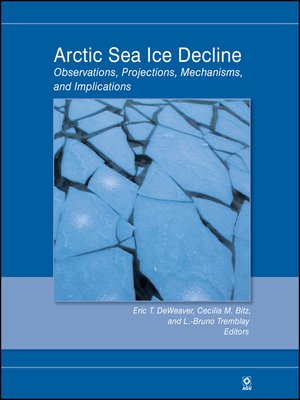Arctic Sea Ice Decline
ebook ∣ Observations, Projections, Mechanisms, and Implications · Geophysical Monograph
By Eric T. DeWeaver

Sign up to save your library
With an OverDrive account, you can save your favorite libraries for at-a-glance information about availability. Find out more about OverDrive accounts.
Find this title in Libby, the library reading app by OverDrive.



Search for a digital library with this title
Title found at these libraries:
| Library Name | Distance |
|---|---|
| Loading... |
Published by the American Geophysical Union as part of the Geophysical Monograph Series, Volume 180.
This volume addresses the rapid decline of Arctic sea ice, placing recent sea ice decline in the context of past observations, climate model simulations and projections, and simple models of the climate sensitivity of sea ice. Highlights of the work presented here includeAn appraisal of the role played by wind forcing in driving the decline; A reconstruction of Arctic sea ice conditions prior to human observations, based on proxy data from sediments; A modeling approach for assessing the impact of sea ice decline on polar bears, used as input to the U.S. Fish and Wildlife Service's decision to list the polar bear as a threatened species under the Endangered Species Act; Contrasting studies on the existence of a "tipping point," beyond which Arctic sea ice decline will become (or has already become) irreversible, including an examination of the role of the small ice cap instability in global warming simulations; A significant summertime atmospheric response to sea ice reduction in an atmospheric general circulation model, suggesting a positive feedback and the potential for short-term climate prediction.
This volume addresses the rapid decline of Arctic sea ice, placing recent sea ice decline in the context of past observations, climate model simulations and projections, and simple models of the climate sensitivity of sea ice. Highlights of the work presented here include
The book will be of interest to researchers attempting to understand the recent behavior of Arctic sea ice, model projections of future sea ice loss, and the consequences of sea ice loss for the natural and human systems of the Arctic.







